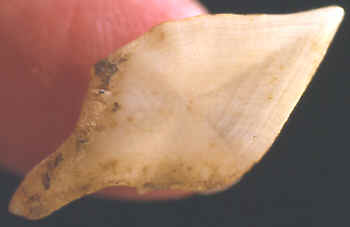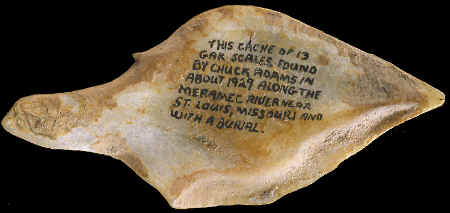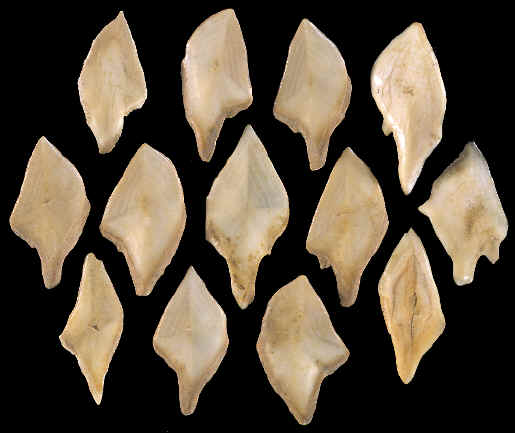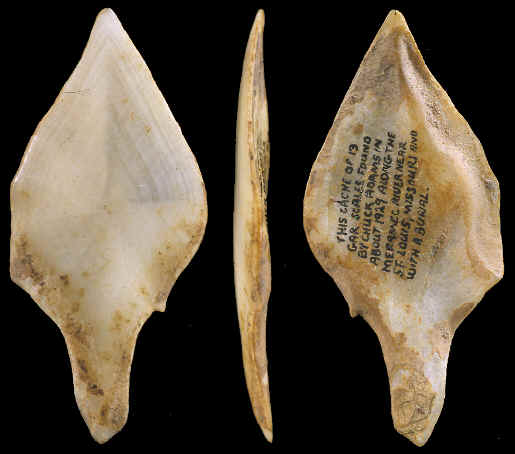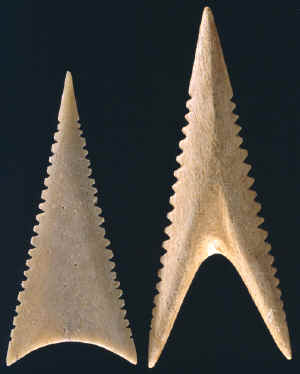|
|
|
|
|
GAR
SCALE The gar scales pictured here were found in 1929 by Chuck Adams near St. Louis, Missouri on a bank of the Meramec River. All thirteen gar scales were found together in a cache and in association with a burial. There's no way of proving that these particular scales were once hafted onto arrow shafts. But since they were found in association with a burial they must have once had a purpose to that individual. In fact one of the scales does seem to have been altered slightly by grinding two edges to a sharp point. The longest scale in this cache measures 1 1/8 inches (2.8 cm) long. |
|
|
Projectile points made of organic materials were used all across North America beginning with the Paleo period. For example, two bone spear points were found during excavation on the Paleo-Indian Sheriden Cave site in Ohio. Paleo period spear points made of ivory have been found in Florida rivers. The archaeological record in North America has shown that Native Americans have been using projectile points made of antler, bone, ivory and even gar scales. But these types of organic materials are difficult to study because they don't survive well, especially the earliest examples. |
|
|
Some materials like the tips of antler tines and gar scales have a natural shape that supports their application for use as arrow points. No one knows how long gar scales have been used as arrowheads. It's been suggested that they were in use as early as A.D. 200 with the beginning of bows and arrows in the Mississippi Valley. |
|
|
|
|
Gars are freshwater fish that measure up to 10 feet (3m) in length and weight up to 300 pounds (135k). The scales that cover their bodies are made of a very durable material with an enamel like coating on the surface. These scales were also used for other things besides arrowheads. In 1960 there were 40 fishhooks found with a burial near Memphis, Tennessee that were made of gar scales. Ancient cultures around the world have always utilized whatever they could from their local natural resources and gar scales are just another example. |
|
|
"REFERENCES" 1985, "Selected Preforms, Points and Knives of the North American Indians," Vol. I, by Gregory Perino, p.143. |
|
